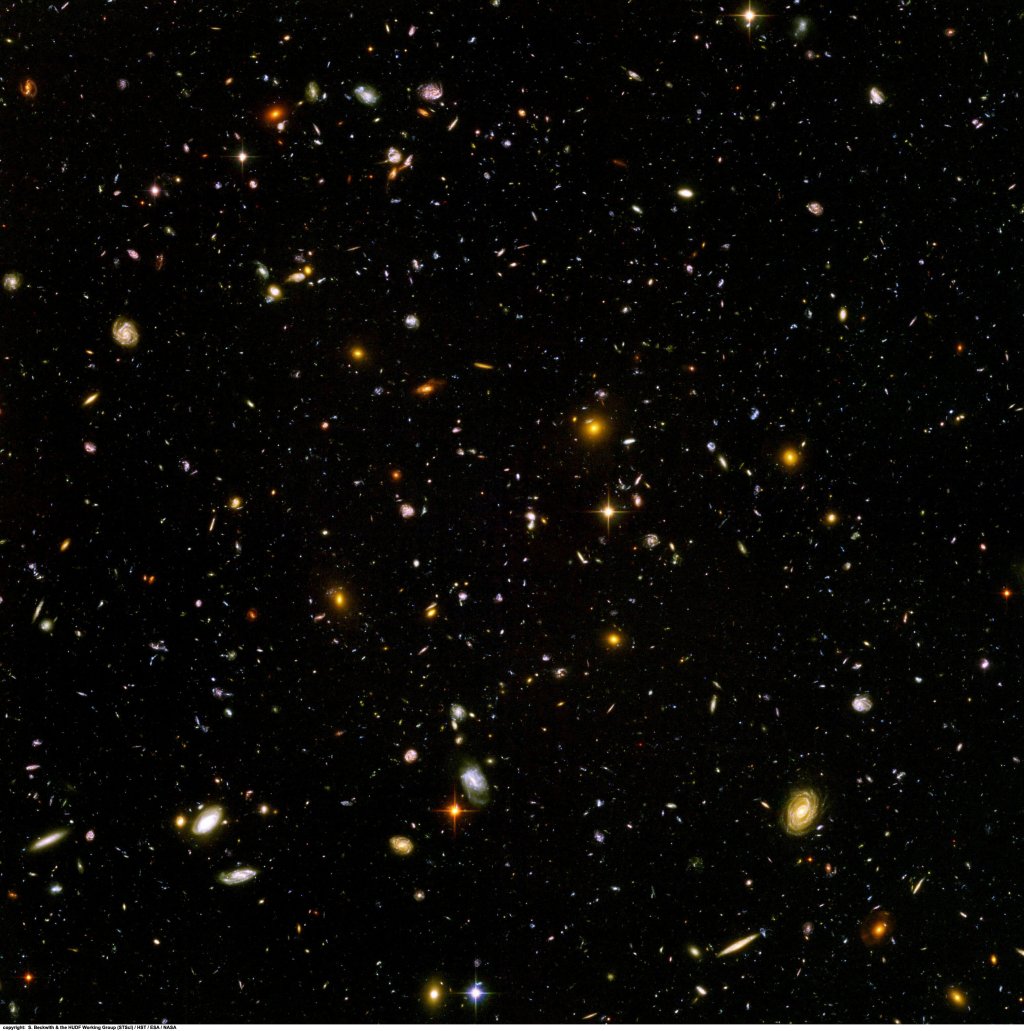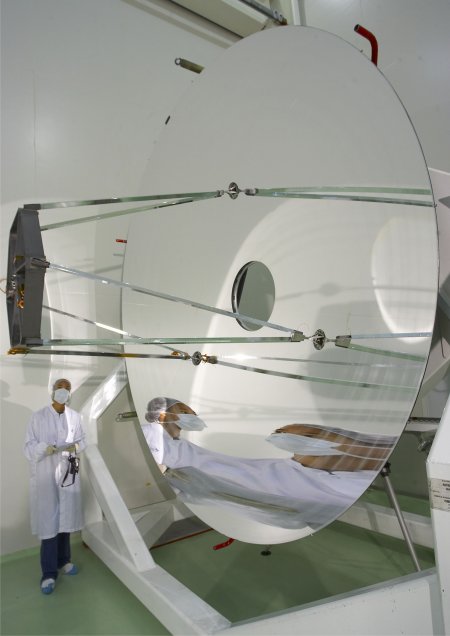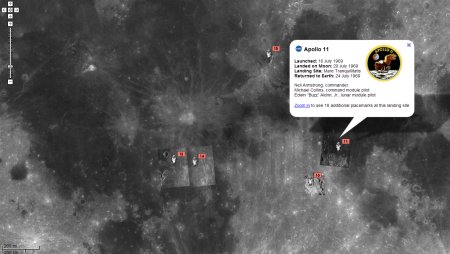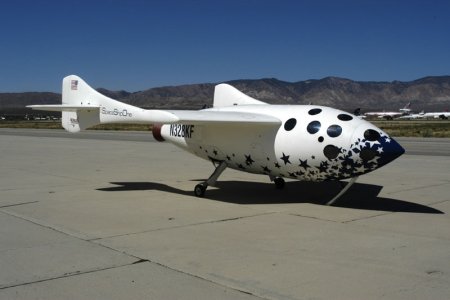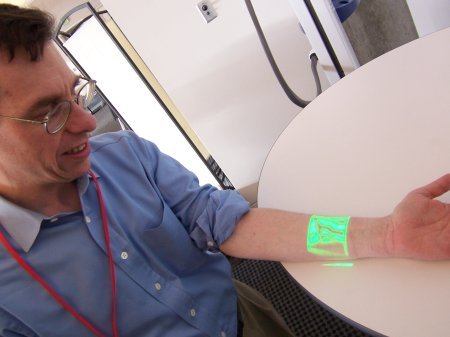Lightest – The Electron Neutrino
0.0000000000000000000000000000000000036kg
The electron neutrino is so light that it’s very difficult to detect; any detector needs to be buried deep underground where other particles can’t reach it and it needs to be very, very big.
The Super Kamiokande neutrino detector consists of nearly 50 million kilograms of pure water surrounded by 11,200 photomultiplier tubes buried 1000m underground. The photograph below shows workers in an inflatable boat working on one of the detectors.
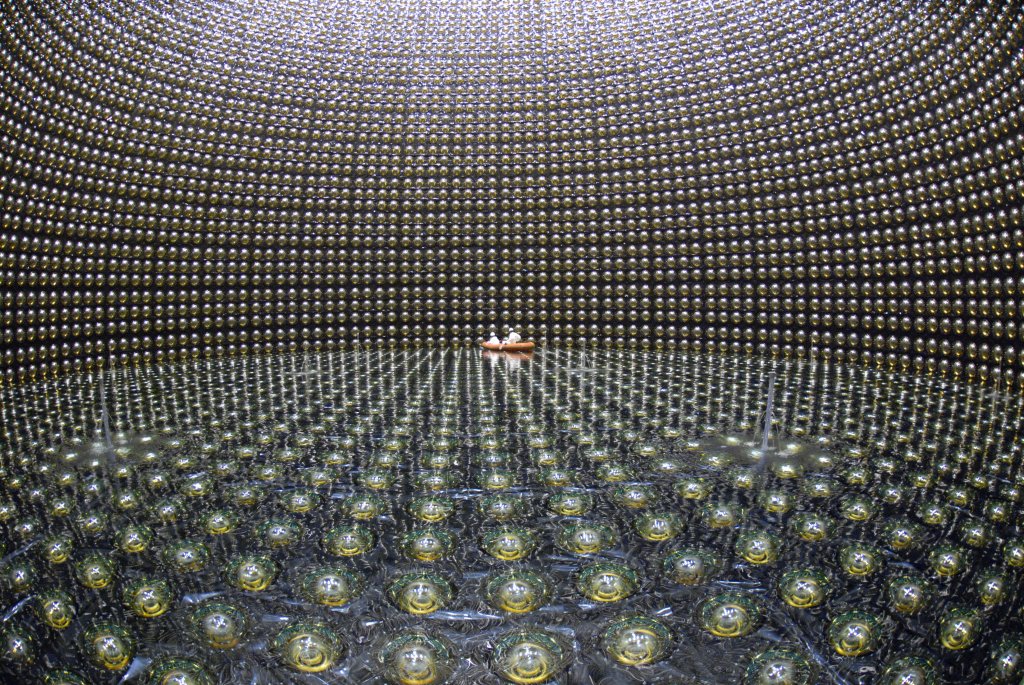
Heaviest – The Universe
30000000000000000000000000000000000000000000000000000kg
Even though its average density is 300 billion billion billion times less than water’s, the Universe is so huge that it still manages to weigh in with the largest mass.
The image below is the Hubble Ultra Deep Field image – a picture of a huge expanse of space containing at least 10,000 of the Universe’s earliest galaxies.
